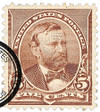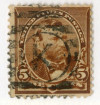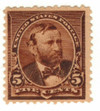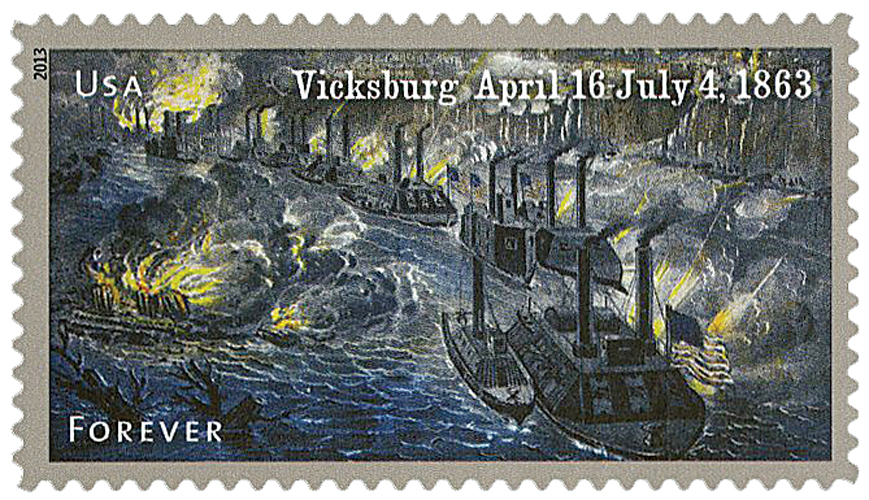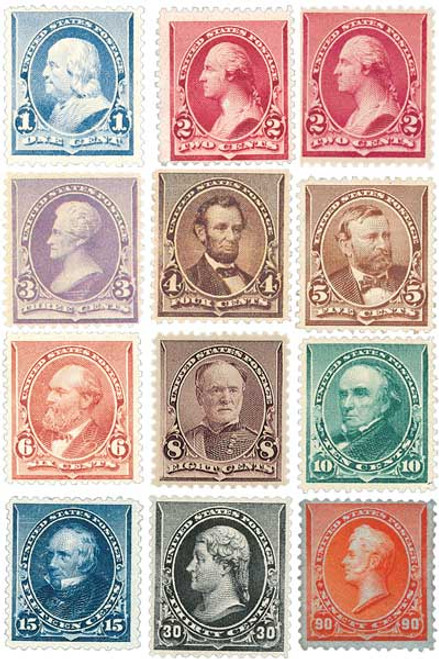
# 223 - 1890 5c U S Grant, chocolate
1890-93 Regular Issue 5¢ Grant
Issue Date: June 2, 1890
Issue Quantity: 152,236,530
Printed by: American Bank Note Company
Method: Flat plate
Watermark: None
Perforation: 12
Color: Chocolate
Siege Of Vicksburg
Vicksburg, Mississippi, was called the “Gibraltar of the West” because cannons mounted on the bluffs kept enemy ships from passing by on the Mississippi River while narrow ridges and deep ravines protected the city from a land attack. North and South both knew the importance of controlling the key position.
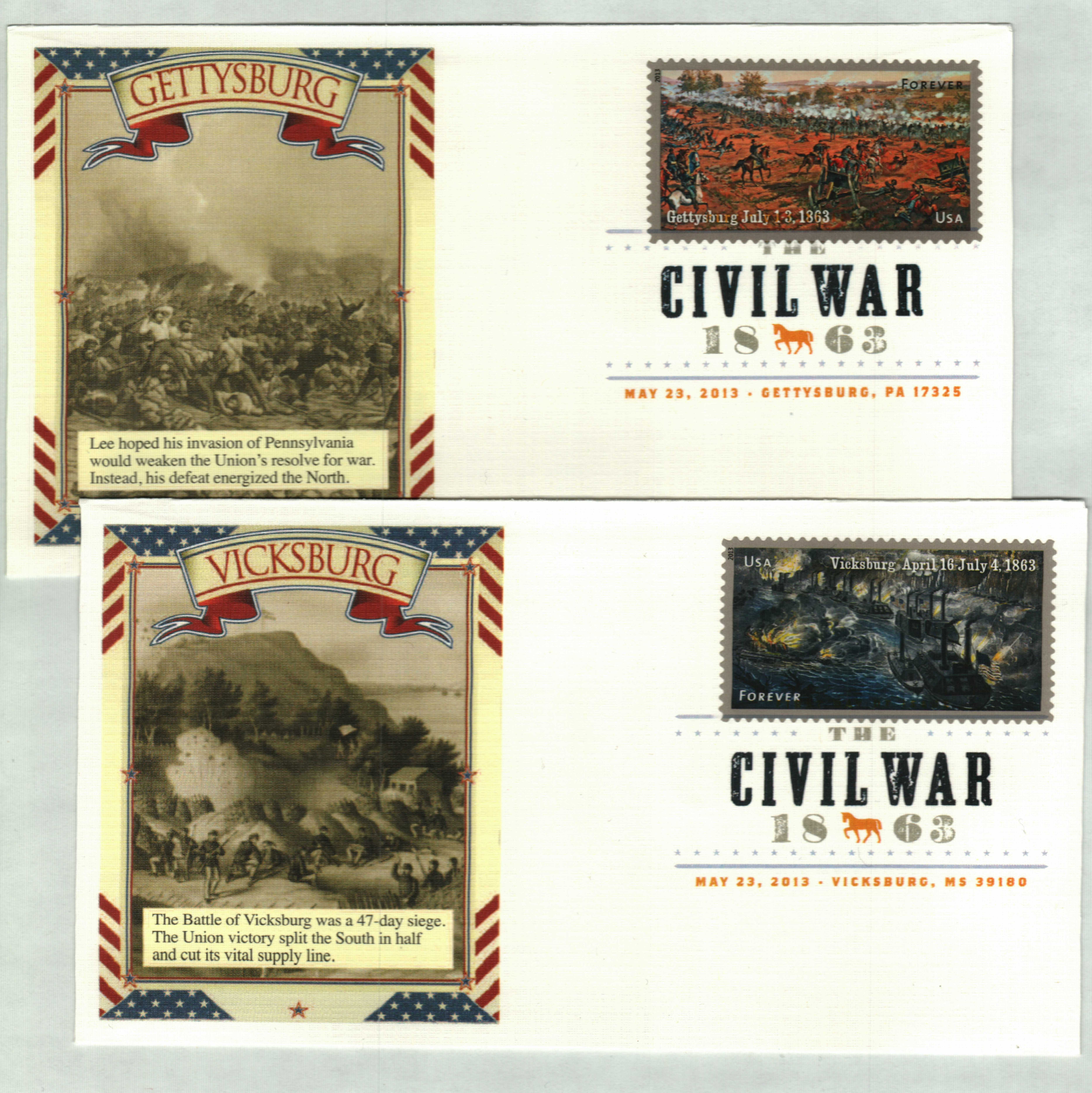
For the Confederates, it was the connecting link between the eastern and western parts of the South and a main supply route for the army. President Lincoln called Vicksburg the key to winning the war. He said, “The war can never be brought to a close until that key is in our pocket.”
The Union had tried to capture Vicksburg in 1862. Naval vessels had bombarded the fort from May to July, but the Confederate troops held out. Grant had tried an attack by land but was forced to retreat when Southern cavalry disrupted his supply lines.
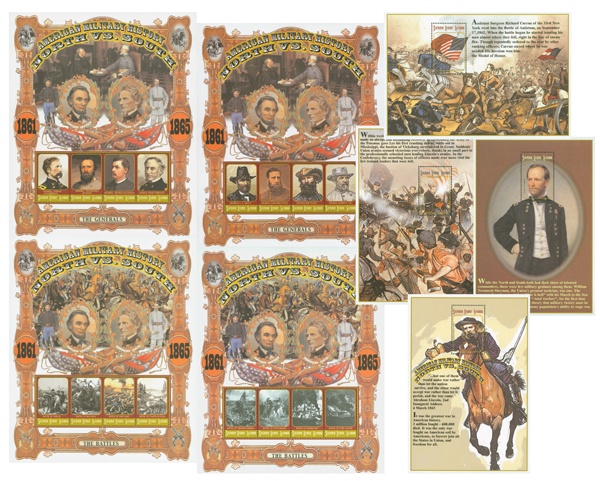
Meanwhile, the Rebels strengthened their position. In addition to natural barriers, they built nine forts connected by trenches and rifle pits. The line of defense formed a semicircle around Vicksburg. Supplies were stockpiled in anticipation of a long battle.
In May 1863, Grant began another campaign to take Vicksburg. After crossing the Mississippi from Louisiana, he forced his way northeast. In seventeen days, the 22,000-man Army of the Tennessee marched 200 miles and was victorious in five battles. On May 18, the Northern Army had reached their prime target and set up camp outside the defenses of Vicksburg.
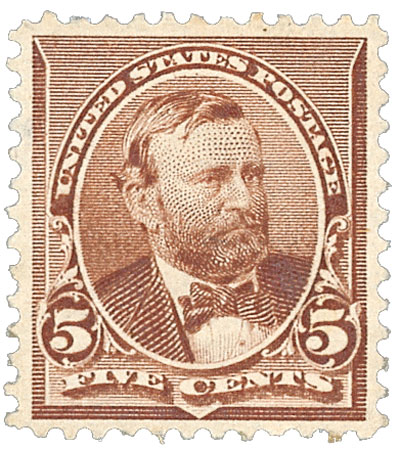
The Confederate troops behind the fortifications awoke the next morning to cannon fire. The Union artillery bombardment lasted for hours. That afternoon, Union soldiers stormed the defenses in the northeast but were driven back. Almost 1,000 men were lost in the attempt.
Three days later, Grant threw his whole army against Vicksburg’s fortifications. After four hours of artillery fire, the Union rushed the enemy. Again they were forced to retreat, this time more than 3,000 men were killed, wounded, or captured. The Northern commander decided to lay siege to the city to avoid further loss of life.
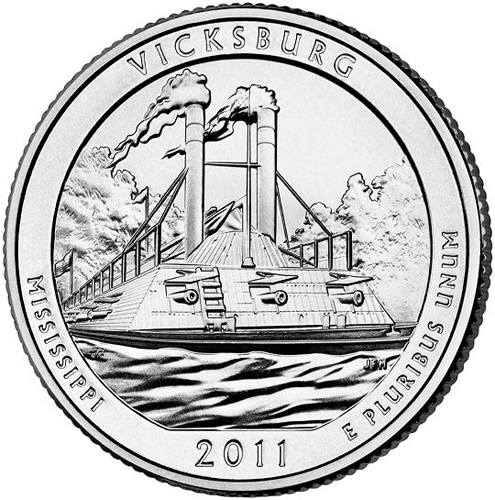
For the remainder of May and throughout June, the Union extended their lines, encircling Vicksburg and cutting off the Confederate lines of supplies and communications. Behind the walls, rations were running low. By the end of June, each man received only a handful of peas and rice each day. Realizing the situation was hopeless, Confederate commander John Pemberton rode out to discuss terms for surrender.
On the morning of July 4, 1863, white flags flew over the walls at Vicksburg. Confederate soldiers marched out and handed over their weapons. The Union Army then entered the city victoriously.
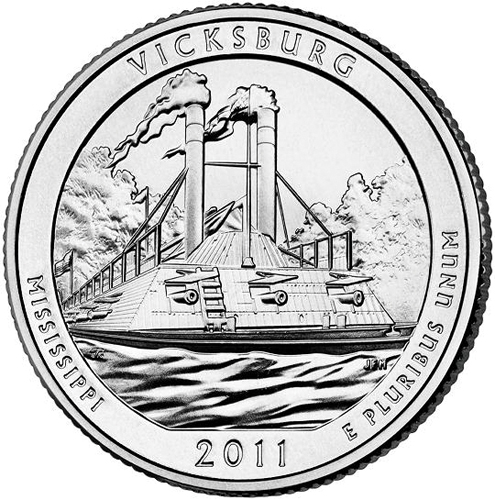
Distraught by the loss of Vicksburg, Pemberton resigned his commission and tried to re-enlist as a private. Confederate President Jefferson Davis wrote, “I thought and still think you did right to risk an army for the purpose of keeping command of even a section of the Mississippi River” and commissioned Pemberton lieutenant colonel of artillery. For General Grant, the victory cemented his reputation as a skillful leader. By the following summer, he was in command of all the Union forces.
The victory at Vicksburg opened the Mississippi River to trade and transportation of supplies for the North. The Confederacy lost their northern line of defense and an important supply route. When President Lincoln received Grant’s message about Vicksburg’s surrender, he said, “Thank God. The Father of Waters again goes unvexed to the sea.”
Click here for more from the Vicksburg National Military Park website.
1890-93 Regular Issue 5¢ Grant
Issue Date: June 2, 1890
Issue Quantity: 152,236,530
Printed by: American Bank Note Company
Method: Flat plate
Watermark: None
Perforation: 12
Color: Chocolate
Siege Of Vicksburg
Vicksburg, Mississippi, was called the “Gibraltar of the West” because cannons mounted on the bluffs kept enemy ships from passing by on the Mississippi River while narrow ridges and deep ravines protected the city from a land attack. North and South both knew the importance of controlling the key position.

For the Confederates, it was the connecting link between the eastern and western parts of the South and a main supply route for the army. President Lincoln called Vicksburg the key to winning the war. He said, “The war can never be brought to a close until that key is in our pocket.”
The Union had tried to capture Vicksburg in 1862. Naval vessels had bombarded the fort from May to July, but the Confederate troops held out. Grant had tried an attack by land but was forced to retreat when Southern cavalry disrupted his supply lines.

Meanwhile, the Rebels strengthened their position. In addition to natural barriers, they built nine forts connected by trenches and rifle pits. The line of defense formed a semicircle around Vicksburg. Supplies were stockpiled in anticipation of a long battle.
In May 1863, Grant began another campaign to take Vicksburg. After crossing the Mississippi from Louisiana, he forced his way northeast. In seventeen days, the 22,000-man Army of the Tennessee marched 200 miles and was victorious in five battles. On May 18, the Northern Army had reached their prime target and set up camp outside the defenses of Vicksburg.

The Confederate troops behind the fortifications awoke the next morning to cannon fire. The Union artillery bombardment lasted for hours. That afternoon, Union soldiers stormed the defenses in the northeast but were driven back. Almost 1,000 men were lost in the attempt.
Three days later, Grant threw his whole army against Vicksburg’s fortifications. After four hours of artillery fire, the Union rushed the enemy. Again they were forced to retreat, this time more than 3,000 men were killed, wounded, or captured. The Northern commander decided to lay siege to the city to avoid further loss of life.

For the remainder of May and throughout June, the Union extended their lines, encircling Vicksburg and cutting off the Confederate lines of supplies and communications. Behind the walls, rations were running low. By the end of June, each man received only a handful of peas and rice each day. Realizing the situation was hopeless, Confederate commander John Pemberton rode out to discuss terms for surrender.
On the morning of July 4, 1863, white flags flew over the walls at Vicksburg. Confederate soldiers marched out and handed over their weapons. The Union Army then entered the city victoriously.

Distraught by the loss of Vicksburg, Pemberton resigned his commission and tried to re-enlist as a private. Confederate President Jefferson Davis wrote, “I thought and still think you did right to risk an army for the purpose of keeping command of even a section of the Mississippi River” and commissioned Pemberton lieutenant colonel of artillery. For General Grant, the victory cemented his reputation as a skillful leader. By the following summer, he was in command of all the Union forces.
The victory at Vicksburg opened the Mississippi River to trade and transportation of supplies for the North. The Confederacy lost their northern line of defense and an important supply route. When President Lincoln received Grant’s message about Vicksburg’s surrender, he said, “Thank God. The Father of Waters again goes unvexed to the sea.”
Click here for more from the Vicksburg National Military Park website.





